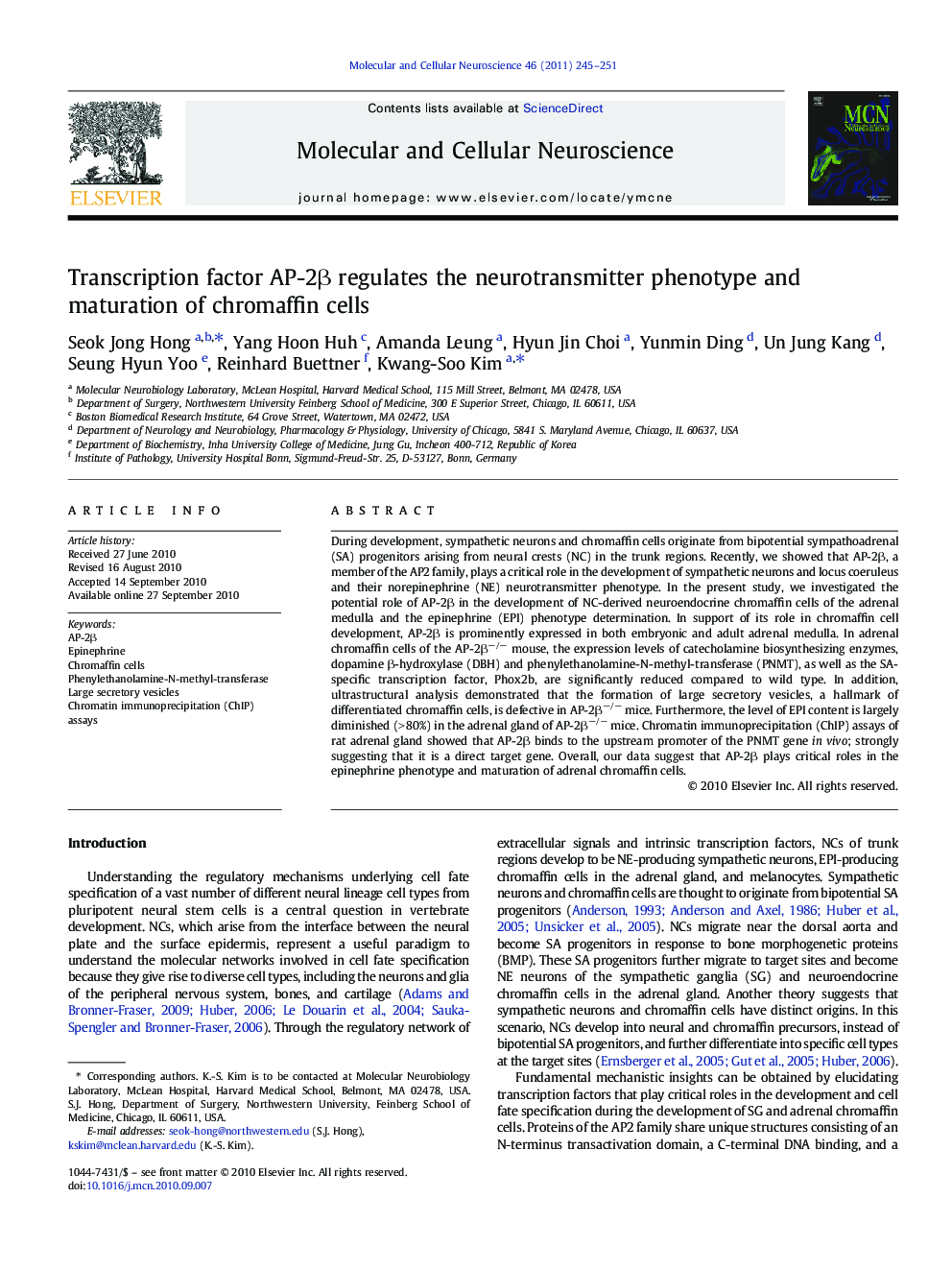| Article ID | Journal | Published Year | Pages | File Type |
|---|---|---|---|---|
| 10956641 | Molecular and Cellular Neuroscience | 2011 | 7 Pages |
Abstract
During development, sympathetic neurons and chromaffin cells originate from bipotential sympathoadrenal (SA) progenitors arising from neural crests (NC) in the trunk regions. Recently, we showed that AP-2β, a member of the AP2 family, plays a critical role in the development of sympathetic neurons and locus coeruleus and their norepinephrine (NE) neurotransmitter phenotype. In the present study, we investigated the potential role of AP-2β in the development of NC-derived neuroendocrine chromaffin cells of the adrenal medulla and the epinephrine (EPI) phenotype determination. In support of its role in chromaffin cell development, AP-2β is prominently expressed in both embryonic and adult adrenal medulla. In adrenal chromaffin cells of the AP-2βâ/â mouse, the expression levels of catecholamine biosynthesizing enzymes, dopamine β-hydroxylase (DBH) and phenylethanolamine-N-methyl-transferase (PNMT), as well as the SA-specific transcription factor, Phox2b, are significantly reduced compared to wild type. In addition, ultrastructural analysis demonstrated that the formation of large secretory vesicles, a hallmark of differentiated chromaffin cells, is defective in AP-2βâ/â mice. Furthermore, the level of EPI content is largely diminished (> 80%) in the adrenal gland of AP-2βâ/â mice. Chromatin immunoprecipitation (ChIP) assays of rat adrenal gland showed that AP-2β binds to the upstream promoter of the PNMT gene in vivo; strongly suggesting that it is a direct target gene. Overall, our data suggest that AP-2β plays critical roles in the epinephrine phenotype and maturation of adrenal chromaffin cells.
Keywords
Related Topics
Life Sciences
Biochemistry, Genetics and Molecular Biology
Cell Biology
Authors
Seok Jong Hong, Yang Hoon Huh, Amanda Leung, Hyun Jin Choi, Yunmin Ding, Un Jung Kang, Seung Hyun Yoo, Reinhard Buettner, Kwang-Soo Kim,
